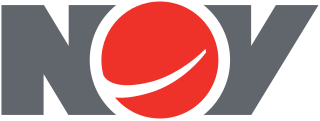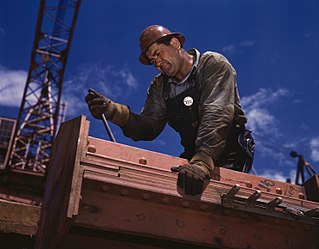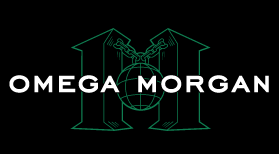
An oil platform is a large structure with facilities to extract and process petroleum and natural gas that lie in rock formations beneath the seabed. Many oil platforms will also have facilities to accommodate the workers, although it is also common to have a separate accommodation platform linked by bridge to the production platform. Most commonly, oil platforms engage in activities on the continental shelf, though they can also be used in lakes, inshore waters, and inland seas. Depending on the circumstances, the platform may be fixed to the ocean floor, consist of an artificial island, or float. In some arrangements the main facility may have storage facilities for the processed oil. Remote subsea wells may also be connected to a platform by flow lines and by umbilical connections. These sub-sea facilities may include one or more subsea wells or manifold centres for multiple wells.

A crane is a machine used to move materials both vertically and horizontally, utilizing a system of a boom, hoist, wire ropes or chains, and sheaves for lifting and relocating heavy objects within the swing of its boom. The device uses one or more simple machines, such as the lever and pulley, to create mechanical advantage to do its work. Cranes are commonly employed in transportation for the loading and unloading of freight, in construction for the movement of materials, and in manufacturing for the assembling of heavy equipment.

A dragline excavator is a heavy-duty excavator used in civil engineering and surface mining. It was invented in 1904, and presented an immediate challenge to the steam shovel and its diesel and electric powered descendant, the power shovel. Much more efficient than even the largest of the latter, it enjoyed a heyday in extreme size for most of the 20th century, first becoming challenged by more efficient rotary excavators in the 1950s, then superseded by them on the upper end from the 1970s on.

A container crane is a type of large dockside gantry crane found at container terminals for loading and unloading intermodal containers from container ships.

J. D. Irving Limited (JDI) is a privately owned conglomerate company headquartered in Saint John, New Brunswick, Canada. It is a part of the Irving Group of Companies and consists of various subsidiaries such as Irving Tissue, Irving Equipment, Kent Building Supplies, New Brunswick Railway, New Brunswick Southern Railway, Eastern Maine Railway, Maine Northern Railway, Brunswick News, Acadia Broadcasting, Irving Shipbuilding, and Cavendish Farms, among others. It is involved in many industries including forestry, forestry products, agriculture, food processing, transportation, and shipbuilding. JDI along with Irving Oil, Ocean Capital Investments and Brunswick News, forms the bulk of the Irving Group of Companies, which groups the interests of the Irving family.

NOV Inc., formerly National Oilwell Varco, is an American multinational corporation based in Houston, Texas. It is a worldwide provider of equipment and components used in oil and gas drilling and production operations, oilfield services, and supply chain integration services to the upstream oil and gas industry. The company conducts operations in more than 500 locations across six continents, operating through three reporting segments: Rig Technologies, Wellbore Technologies, and Completion & Production Solutions.

A rigger or slinger is a skilled tradesperson who specializes in the assistance of manual mechanical advantage device comprising pulley, block and tackle or motorised such as a crane or derrick or chain hoists or capstan winch.

A hoist is a device used for lifting or lowering a load by means of a drum or lift-wheel around which rope or chain wraps. It may be manually operated, electrically or pneumatically driven and may use chain, fiber or wire rope as its lifting medium. The most familiar form is an elevator, the car of which is raised and lowered by a hoist mechanism. Most hoists couple to their loads using a lifting hook. Today, there are a few governing bodies for the North American overhead hoist industry which include the Hoist Manufactures Institute, ASME, and the Occupational Safety and Health Administration. HMI is a product counsel of the Material Handling Industry of America consisting of hoist manufacturers promoting safe use of their products.

A heavy equipment operator operates heavy equipment used in engineering and construction projects. Typically only skilled workers may operate heavy equipment, and there is specialized training for learning to use heavy equipment.
The rental industry spans many different types of equipment from tools to heavy construction equipment, aerial to vehicles, party and event to computers and test and measurement equipment and highly specialized areas such as Crane and Temporary Accommodation rental. In the UK and some parts of Europe it is referred to as the Hire Industry.

Material handling equipment (MHE) is mechanical equipment used for the movement, storage, control, and protection of materials, goods and products throughout the process of manufacturing, distribution, consumption, and disposal. The different types of equipment can be classified into four major categories: transport equipment, positioning equipment, unit load formation equipment, and storage equipment.

A heavy-lift ship is a vessel designed to move very large loads that cannot be transported by normal ships. They are of two types:

A drafter is an engineering technician who makes detailed technical drawings or CAD designs for machinery, buildings, electronics, infrastructure, sections, etc. Drafters use computer software and manual sketches to convert the designs, plans, and layouts of engineers and architects into a set of technical drawings. Drafters operate as the supporting developers and sketch engineering designs and drawings from preliminary design concepts.
Irving Whale is a Canadian barge that sank off the north coast of Prince Edward Island, while en route from Halifax, Nova Scotia to Bathurst, New Brunswick, with a cargo of Bunker C oil in a rich fishing area. It is "one of Canada's most notorious nautical disasters". The barge, owned by J.D. Irving Ltd., had carried oil for JDI from 1967 until it sank in 1970. She was refloated in 1996, re-fitted as a deck barge, re-activated, and renamed ATL 2701 in 2001 and renamed again in 2009, as Atlantic Sea Lion. Since the accident, she only transports dry cargo.
Accredited Crane Operator Certification OSHA regulation 29 CFR 1926 Subpart CC, released August 9, 2010, requires crane operators involved in construction to be certified by an accredited certification provider by November 10, 2014. An operator is defined as any person operating the equipment. To be accredited, certification providers must be accredited by a nationally recognized accrediting agency, defined as "an organization that, due to its independence and expertise, is widely recognized as competent to accredit testing organizations. Examples of such accrediting agencies include, but are not limited to, the National Commission for Certifying Agencies and the American National Standards Institute." This is the first time certification by an accredited certification provider has been required on a national level, although individual states and cities have required crane operator certification as far back as 2000. The new OSHA standards make the completion of this requirement an important topic of knowledge for the crane and lifting industry.
The Irving Group of Companies is an informal name given to those companies owned and controlled by the Irving family of New Brunswick—descendants of Canadian industrialist K.C. Irving: his sons James K. (1928–2024), Arthur (1930–2024), and John (1932–2010), and their respective children.

Omega Morgan is a privately held company headquartered in Hillsboro in the U.S. state of Oregon. Founded in 1991, the 350-employee company specializes in heavy lifting, specialized transportation, machinery moving, crane and rigging services, plant relocations, equipment installations, millwrighting, and applied and industrial metrology.
Sarens is a Belgian multinational company headquartered in Wolvertem, Belgium. Its business includes, heavy lift, engineered transport, and crane rental services. It produces a variety of equipment including cranes, transportation, gantries, jacking products, and other heavy lifting products.
National Commission for the Certification of Crane Operators commonly referred to by the acronym NCCCO is a non-profit organization, established in January 1995 and headquartered in Fairfax, Virginia, United States with regional offices in Dunedin, Florida and Murray, Utah for the certification of crane operators.














